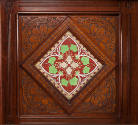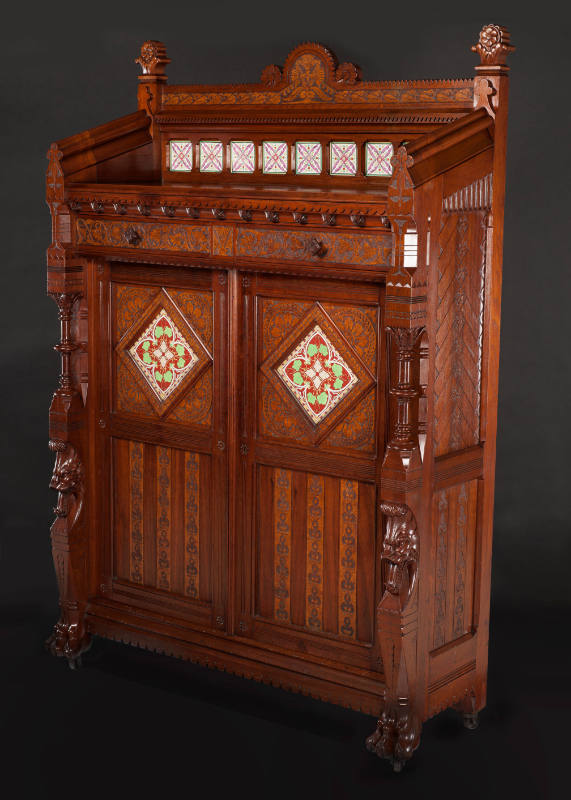Cabinet
Attributed to
Daniel Pabst
(American, 1826 - 1910, active Philadelphia, 1854- 1896)
Date1875
MediumWood and ceramic
DimensionsOverall: 75 1/4 × 50 × 18in. (191.1 × 127 × 45.7cm)
ClassificationsFURNISHINGS
Credit LineMuseum Purchase
Object number2006.5
On View
Not on viewCollections
Copyright<a rel="license" href="http://creativecommons.org/licenses/by-nc/4.0/"><img alt="Creative Commons License" style="border-width:0" src="https://i.creativecommons.org/l/by-nc/4.0/80x15.png" /></a><br />This work is licensed under a <a rel="license" href="http://creativecommons.org/licenses/by-nc/4.0/">Creative Commons Attribution-NonCommercial 4.0 International License</a>.
Label TextDaniel Pabst's exceptional craftsmanship and progressive designs made him one of the leading cabinetmakers in Philadelphia during the second half of the nineteenth century. Furniture made by Pabst exhibits superb craftsmanship with fastidious attention to cabinetry and hand carving at a time when machines were beginning to replace the carver's skills.
Only a few pieces of marked Pabst furniture are known. The attribution of other pieces is therefore dependent on comparisons with marked examples and with a handful of objects that descended in the Pabst family or have well-documented provenances. This cabinet features many of Pabst's hallmarks. Its architectural outline, including columns and a crest, is visually lightened by rich, compartmentalized surface ornamentation-carving, incising, and framed ceramic tiles. "Cameo carving," a Pabst trademark, highlights the ornamentation on the drawer fronts and cabinet doors. (It is also found on the inside of the doors.) This method of decoration involves cutting through a top layer of light-colored wood veneer to reveal the darker walnut underneath. To increase the contrast between the two woods, the ground is stippled. Other typical Pabst carved ornamentation includes the fierce, open-mouth griffins and weighty paw feet.
In the 1870s, Pabst turned his attention to the emerging reform style called Modern Gothic, which simplified traditional Gothic elements. The work of two British designers, Bruce Talbert (1838-81) and Christopher Dresser (1834-1904), appear to have been especially influential on Pabst's furniture designs as evident in the overall form and in the stylized plant motifs that adorn the front of the MWPAI cabinet.

















